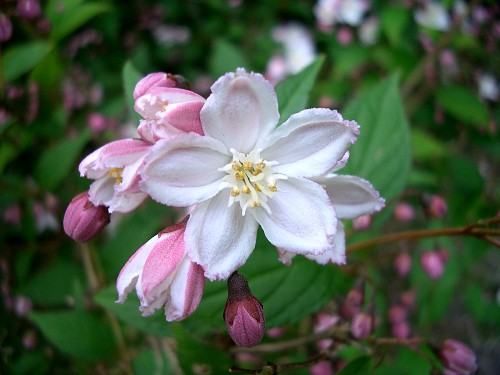How to care for spring-flowering shrubs

Spring-flowering shrubs, such as Forsythia, Philadelphus (mock orange), Deutzia, and Weigela, have mostly just finished flowering, so their displays are fresh in the mind. Read our quick guide to their care and grow them with confidence.
Planting your shrubs
Spring-flowering woody shrubs are happy in almost any reasonably good quality topsoil. If your top soil is not very good, it’s worth adding some before planting, as these shrubs will be in your garden for quite a while. You can buy topsoil from topsoil suppliers, and it’s worth getting a bulk bag if you’re going to be planting many shrubs, since the quality of soil will determine the quality of the flowering and growth. See our topsoil calculator to see what is the best topsoil bulk bag for your garden.
Ongoing care
For the first few years after planting, you won’t need to do much to your shrubs. However, after about three to five years, they will start to get a bit crowded, and possibly a bit tall. Now is the time to start thinking about some gentle pruning. These shrubs flower on last year’s growth. The ideal time to prune them is therefore just after they have flowered, but before they have really started to grow, so that you don’t lose any of the growth that will be flowering next year. For most, this is likely to be June or July, but will vary by location and species, so watch your plants to see when they’re ready.
How to prune
You will need: good quality secateurs, loppers, gloves.
1) You’re going to remove all the branches that have already flowered, back to the main stem. You should be able to do this reasonably easily with secateurs.
2) The next step is to remove about one third of the old growth down to the ground, which may need loppers. Don’t rush this step, as you want to retain a good shape to the bush, with a good spread of stems. So cut, then look, then cut the next one.
3) The final step is not always necessary. Look at the height, and consider whether you want to lower it to ensure that next year’s flowers are at the right height. For example, with a Philadelphus or Deutzia, you may want to cut it down to no more than about five foot. If so, look for a new stem, which will be green rather than woody, branching off old wood slightly lower down, and cut off the old branch just above it. Try to cut at a branch or bud each time, as it helps the plant to regenerate.
It sounds a bit ruthless, but pruning the bush in this way helps it to grow new stems from the base, encouraging flowers at a lower level. And after all, that’s what you want.
